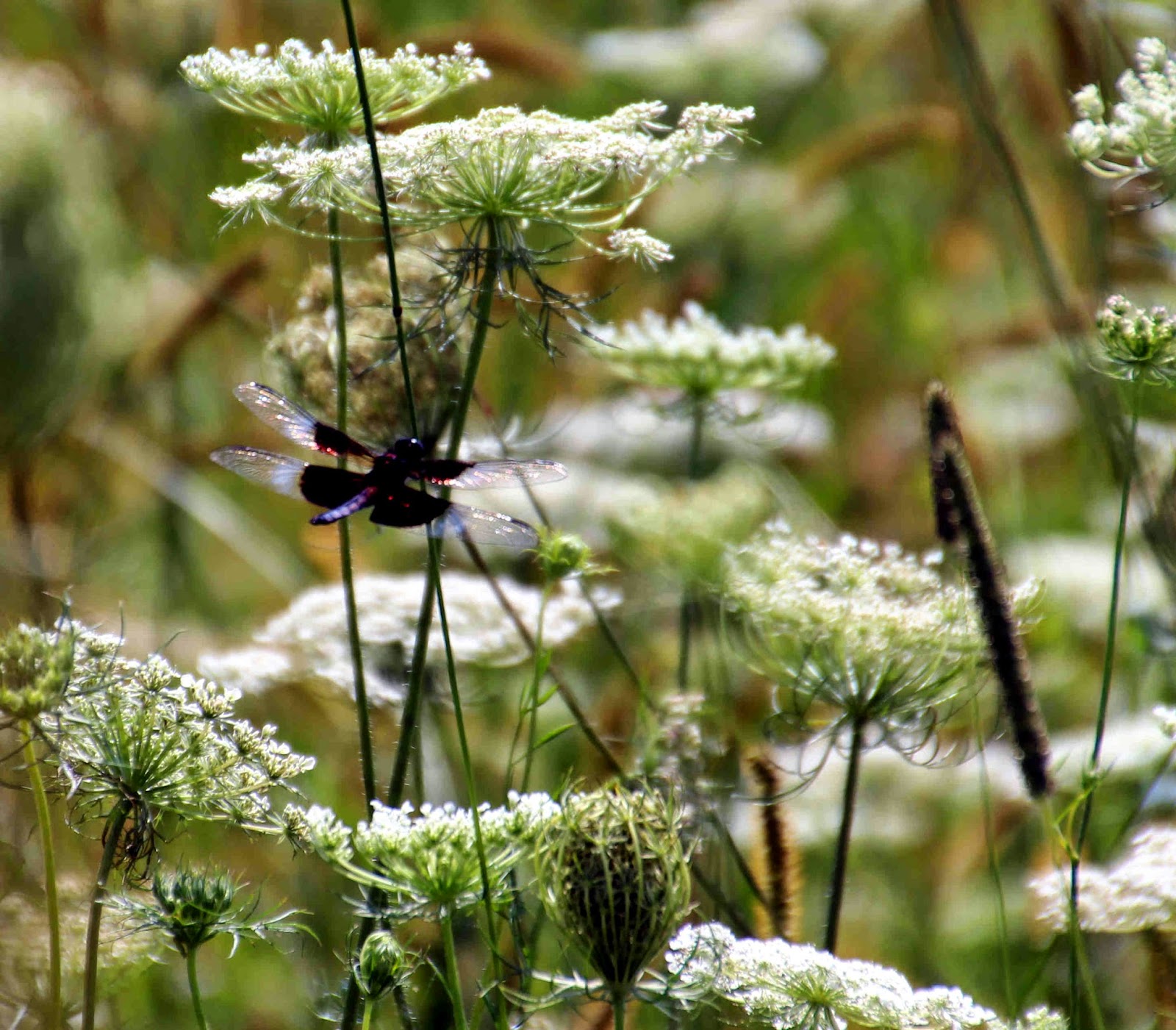By Beth Sullivan
While the season is at
its peak, everyone needs to spend some time in a high summer meadow.
The woodlands are quieting, uniformly green now and drier. Spring
wildflowers are long gone and most vernal pools have dried up. But
the excitement can be found in the open fields, those not hayed or
mowed, but allowed to grow naturally and wildly. Most fields that
have been host to nesting grassland birds are more accessible now.
The nestlings have fledged and it is less likely that anyone walking
into a field will disturb young birds or mammals. From a distance
the fields look flat and open, but walk closer-those plants can be
shoulder height or more!
 |
| Monarch Butterflies seem content to share Joe-Pye Weed blossoms. |
Fennerswood, on North
Main Street, has several small fields that can be seen from the road
but difficult to really access. You can see the haze of pink and
yellow of wildflowers over the green grasses.
Knox Preserve’s
fields continue to evolve. It was only four years ago that they were
farmed for corn. Each year the grasses and flowering forbs increased
in spread and variety. While there are still non-native flowers
there, for instance Queen Anne’s Lace, even those provide nectar
and food sources for numerous insects and seeds to follow and will be
enjoyed by other animals and birds. Now there are Goldenrods, Asters,
Fleabanes and Milkweeds among others. Swallows and Purple Martins
cruise the fields for insects.
But, let me suggest a
new exploration: the Preston Nature Preserve. Left off of 164, just
north of the intersection with 165, is Krug Road. One half mile
down Krug Rd, on the left, is a gateway and Avalonia sign. Parking
is tricky, but you can get off the road. Enter the preserve and
decide your course-clockwise or counter clock wise. It is 55 acres
of mixed habitat. There are woodlands, some showy rock formations and
glacial erratics, low wet areas and a couple of ponds that while low
in volume, still host some turtles and frogs. But the real beauty
of the preserve is to be found in the numerous meadows.
 |
| A shady bench provides an enjoyable meadow view. |
 |
| The path runs through a meadow of Milkweed. |
Avalonia has owned this
land since 1989, but only in the last several years has there been an
active plan to manage the successional growth and curb the spread of
the invasives that seem to threaten every inch of available space.
Efforts are ongoing to remove or at least control the invasives and
promote native grasses and flowers in the restored areas.
 |
| The birding was good along the woodland paths. |
 |
| Cedar posts, barbed wire and horse shoes hint at a farming past. |
On
a recent hot August day, we were thrilled to see good numbers of
Monarchs floating above the masses of pink Joe-Pye-Weed. Monarchs
have been scarce this year, yet here they have found nectar sources
and acres of milkweed on which to lay their eggs. There were
Fritillaries, Swallowtails, Skippers and hosts of other butterflies
as well. Bees and wasps ignored me as I walked deeply into the tall
flowers. Goldenrod, several species, at different stages of
flowering, added the beautiful bright yellow to the scene. Birdlife
was abundant as well with Flycatchers, Bluebirds and families of
Chickadees along the edges and hawks soaring above the open areas.
 |
| Shoulder high pink and gold. |
 |
| A family of Chickadees stayed along the meadow edges. |
 |
| Queen Anne's Lace attracted this dragonfly. |
The trails are not
marked, but they are well mowed and woodland trails are hardened and
easy. They all interconnect and loop together; you cannot get lost,
except in the beauty of the mid-summer meadows. Enjoy.

No comments:
Post a Comment